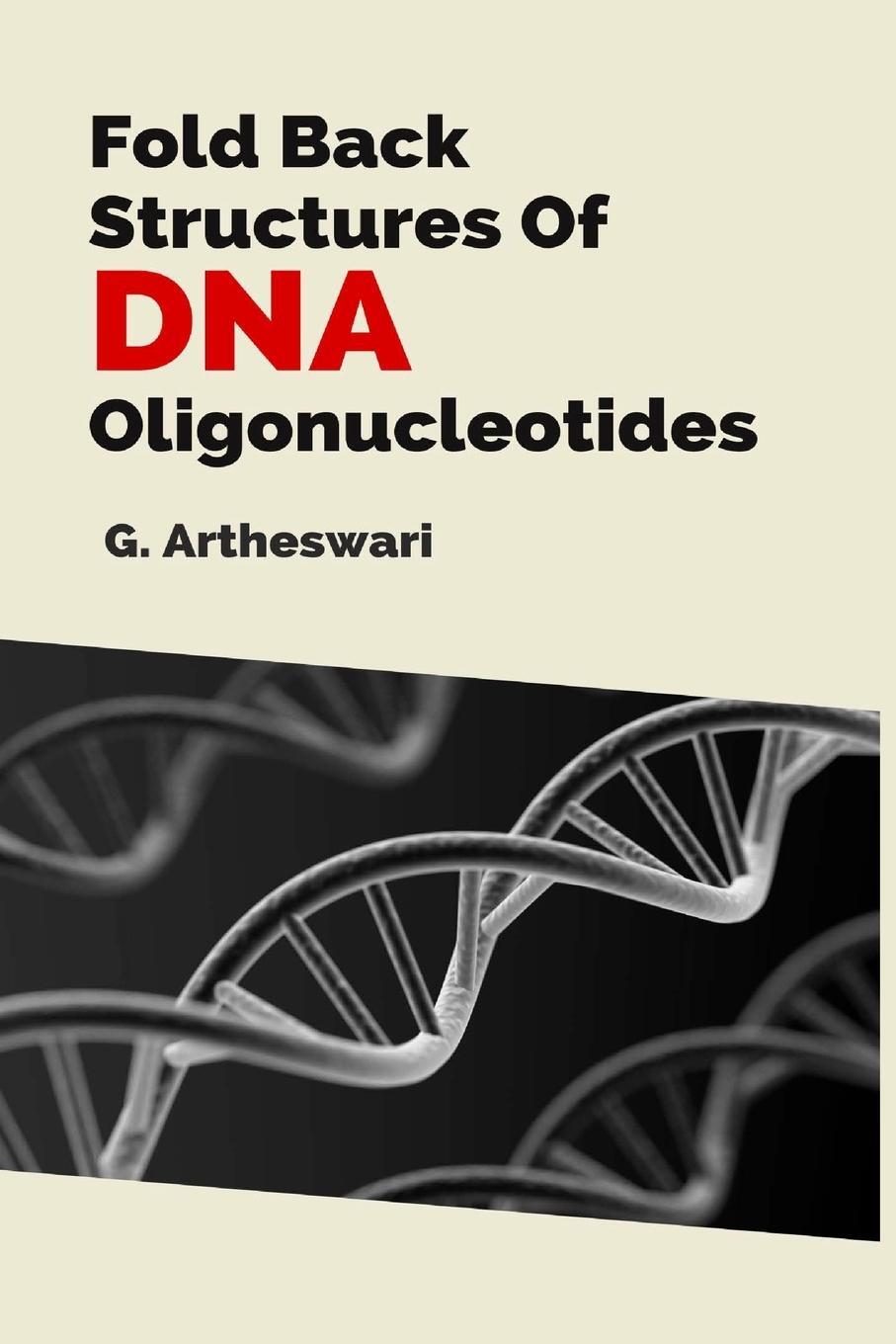Dekorationsartikel gehören nicht zum Leistungsumfang.
Sprache:
Englisch
11,65 €*
Versandkostenfrei per Post / DHL
Lieferzeit 1-2 Wochen
Kategorien:
Beschreibung
Fold back structures of DNA oligonucleotides refer to the various secondary and tertiary structures that DNA can adopt through self-assembly, particularly through base pairing and hydrogen bonding. These structures have become increasingly important in the field of DNA nanotechnology, particularly in the development of DNA origami, which utilizes these structures to create complex and precise nanostructures.
Nucleic acid folding is an essential process in biology, as it allows DNA to compact itself while maintaining its structural integrity. Some common examples of fold back structures include DNA hairpins, bulges, loops, duplexes, triplexes, and quadruplexes. These structures are formed through different types of base pairing and can have varying degrees of stability and flexibility.
DNA topology, supercoiling, flexibility, curvature, torsion, and bending all play critical roles in the formation and stability of fold back structures. DNA melting and hybridization also affect the formation and stability of these structures. The specificity of DNA recognition and binding is a critical aspect of DNA aptamers, biosensors, computing, amplification, sequencing, microarrays, chips, and therapy.
Antisense oligonucleotides, RNA interference, gene silencing, CRISPR/Cas9, and genome editing all rely on the molecular recognition and structural biology of DNA to achieve their therapeutic or research goals. Furthermore, the biophysical and biochemical properties of DNA, such as its thermal stability, pH sensitivity, and mechanical properties, make it an attractive biomaterial for various applications in nanotechnology.
In conclusion, the study of fold back structures of DNA oligonucleotides is a crucial area of research in molecular biology, structural biology, biochemistry, biophysics, and nanotechnology. By understanding the principles of DNA folding and its various structures, scientists can develop innovative technologies and biomaterials for various applications, from biosensors to gene therapy.
.
Nucleic acid folding is an essential process in biology, as it allows DNA to compact itself while maintaining its structural integrity. Some common examples of fold back structures include DNA hairpins, bulges, loops, duplexes, triplexes, and quadruplexes. These structures are formed through different types of base pairing and can have varying degrees of stability and flexibility.
DNA topology, supercoiling, flexibility, curvature, torsion, and bending all play critical roles in the formation and stability of fold back structures. DNA melting and hybridization also affect the formation and stability of these structures. The specificity of DNA recognition and binding is a critical aspect of DNA aptamers, biosensors, computing, amplification, sequencing, microarrays, chips, and therapy.
Antisense oligonucleotides, RNA interference, gene silencing, CRISPR/Cas9, and genome editing all rely on the molecular recognition and structural biology of DNA to achieve their therapeutic or research goals. Furthermore, the biophysical and biochemical properties of DNA, such as its thermal stability, pH sensitivity, and mechanical properties, make it an attractive biomaterial for various applications in nanotechnology.
In conclusion, the study of fold back structures of DNA oligonucleotides is a crucial area of research in molecular biology, structural biology, biochemistry, biophysics, and nanotechnology. By understanding the principles of DNA folding and its various structures, scientists can develop innovative technologies and biomaterials for various applications, from biosensors to gene therapy.
.
Fold back structures of DNA oligonucleotides refer to the various secondary and tertiary structures that DNA can adopt through self-assembly, particularly through base pairing and hydrogen bonding. These structures have become increasingly important in the field of DNA nanotechnology, particularly in the development of DNA origami, which utilizes these structures to create complex and precise nanostructures.
Nucleic acid folding is an essential process in biology, as it allows DNA to compact itself while maintaining its structural integrity. Some common examples of fold back structures include DNA hairpins, bulges, loops, duplexes, triplexes, and quadruplexes. These structures are formed through different types of base pairing and can have varying degrees of stability and flexibility.
DNA topology, supercoiling, flexibility, curvature, torsion, and bending all play critical roles in the formation and stability of fold back structures. DNA melting and hybridization also affect the formation and stability of these structures. The specificity of DNA recognition and binding is a critical aspect of DNA aptamers, biosensors, computing, amplification, sequencing, microarrays, chips, and therapy.
Antisense oligonucleotides, RNA interference, gene silencing, CRISPR/Cas9, and genome editing all rely on the molecular recognition and structural biology of DNA to achieve their therapeutic or research goals. Furthermore, the biophysical and biochemical properties of DNA, such as its thermal stability, pH sensitivity, and mechanical properties, make it an attractive biomaterial for various applications in nanotechnology.
In conclusion, the study of fold back structures of DNA oligonucleotides is a crucial area of research in molecular biology, structural biology, biochemistry, biophysics, and nanotechnology. By understanding the principles of DNA folding and its various structures, scientists can develop innovative technologies and biomaterials for various applications, from biosensors to gene therapy.
.
Nucleic acid folding is an essential process in biology, as it allows DNA to compact itself while maintaining its structural integrity. Some common examples of fold back structures include DNA hairpins, bulges, loops, duplexes, triplexes, and quadruplexes. These structures are formed through different types of base pairing and can have varying degrees of stability and flexibility.
DNA topology, supercoiling, flexibility, curvature, torsion, and bending all play critical roles in the formation and stability of fold back structures. DNA melting and hybridization also affect the formation and stability of these structures. The specificity of DNA recognition and binding is a critical aspect of DNA aptamers, biosensors, computing, amplification, sequencing, microarrays, chips, and therapy.
Antisense oligonucleotides, RNA interference, gene silencing, CRISPR/Cas9, and genome editing all rely on the molecular recognition and structural biology of DNA to achieve their therapeutic or research goals. Furthermore, the biophysical and biochemical properties of DNA, such as its thermal stability, pH sensitivity, and mechanical properties, make it an attractive biomaterial for various applications in nanotechnology.
In conclusion, the study of fold back structures of DNA oligonucleotides is a crucial area of research in molecular biology, structural biology, biochemistry, biophysics, and nanotechnology. By understanding the principles of DNA folding and its various structures, scientists can develop innovative technologies and biomaterials for various applications, from biosensors to gene therapy.
.
Über den Autor
Die Danilo Promotions Ltd. gehört zu den führenden Kalenderverlagen in Großbritannien und gibt jedes Jahr eine große Anzahl an Kalendern in unterschiedlichen Formaten zu Themen wie Sport, Stars und Entertainment sowie Kinofilmen und beliebten Fernsehserien heraus. Der Flechsig Verlag ist Anbieter des Kalenderprogramms in Deutschland und Österreich.
Details
| (Kalender)Format: | Wandkalender |
|---|---|
| Erscheinungsjahr: | 2023 |
| Medium: | Taschenbuch |
| Seiten: | 222 |
| Inhalt: |
14 S.
12 Farbfotos 12 Illustr. Fotos |
| ISBN-13: | 9781805271086 |
| ISBN-10: | 1805271083 |
| Sprache: | Englisch |
| Einband: | Kartoniert / Broschiert |
| Autor: | G Artheswari |
| Hersteller: |
Writers Republic LLC
BrownTrout Publishers Inc |
| Maße: | 229 x 152 x 13 mm |
| Von/Mit: | G Artheswari |
| Erscheinungsdatum: | 15.04.2023 |
| Gewicht: | 0,329 kg |
Über den Autor
Die Danilo Promotions Ltd. gehört zu den führenden Kalenderverlagen in Großbritannien und gibt jedes Jahr eine große Anzahl an Kalendern in unterschiedlichen Formaten zu Themen wie Sport, Stars und Entertainment sowie Kinofilmen und beliebten Fernsehserien heraus. Der Flechsig Verlag ist Anbieter des Kalenderprogramms in Deutschland und Österreich.
Details
| (Kalender)Format: | Wandkalender |
|---|---|
| Erscheinungsjahr: | 2023 |
| Medium: | Taschenbuch |
| Seiten: | 222 |
| Inhalt: |
14 S.
12 Farbfotos 12 Illustr. Fotos |
| ISBN-13: | 9781805271086 |
| ISBN-10: | 1805271083 |
| Sprache: | Englisch |
| Einband: | Kartoniert / Broschiert |
| Autor: | G Artheswari |
| Hersteller: |
Writers Republic LLC
BrownTrout Publishers Inc |
| Maße: | 229 x 152 x 13 mm |
| Von/Mit: | G Artheswari |
| Erscheinungsdatum: | 15.04.2023 |
| Gewicht: | 0,329 kg |
Warnhinweis










